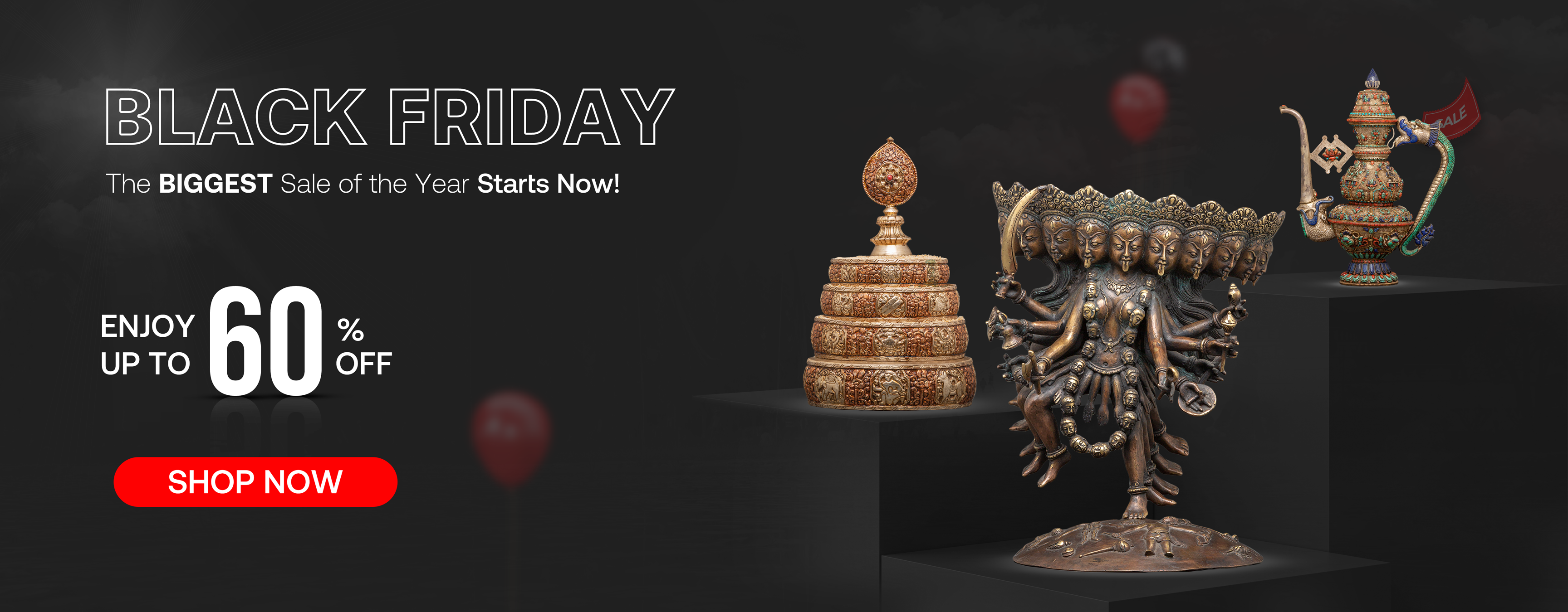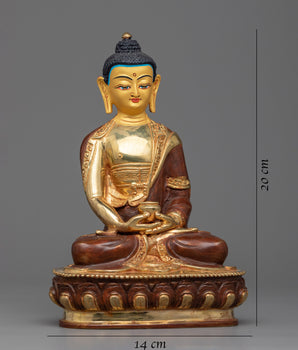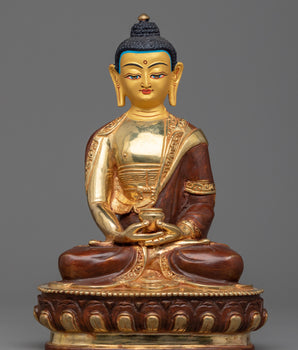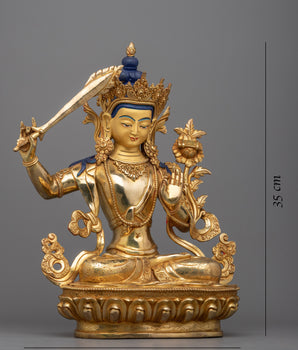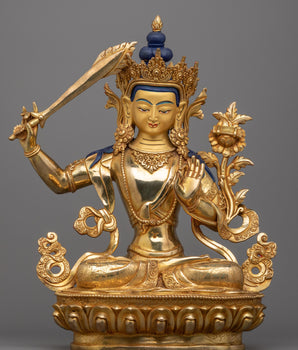The Role of Buddha Chitta Mala in Buddhist Practices
Buddha Chitta Mala, also referred to as Bodhichitta Mala is a revered Buddhist prayer bead necklace primarily utilized in Vajrayana Buddhism for spiritual and meditative practices. These beads are derived from the Ziziphus xiangchengensis species, a plant native to Nepal, especially in the Temal region of Kavrepalanchok district.
The Bodhichitta Mala serves as more than just a meditation aid; it represents the ideals of enlightenment, wisdom, and compassion. It has played a vital role in Buddhist traditions, acting as a means for spiritual development and mindfulness. In recent years, the demand for genuine Buddha Chitta beads has surged, drawing in traders, spiritual seekers, and collectors from across the globe.
This guide delves into the spiritual significance, benefits, varieties, quality indicators, cultivation, market value, and challenges associated with Buddha Chitta Malas, helping practitioners and buyers make well-informed choices when acquiring these precious meditation beads.
The Origin and Meaning of Buddha Chitta Mala
The Buddha Chitta Mala is deeply rooted in Vajrayana Buddhism and carries significant spiritual and historical meaning. The Bodhichitta tree, formerly identified as Ziziphus budhensis is now placed in the same species as Ziziphus xiangchengensis, after thorough botanical tests.
Bodhicitta trees have been cultivated for centuries in Nepal’s Temal region, where it is highly valued for their religious and cultural importance. These sacred beads represent awakening, compassion, and the enlightened mind, making them vital for meditation and mantra chanting. Legends connect their spiritual significance to Buddha and Guru Padmasambhava, further enhancing their importance in various Buddhist traditions.
The term "Bodhichitta" derives from the Sanskrit words:
- "Bodhi" meaning "awakening" or "enlightenment."
- "Chitta" meaning "mind" or "consciousness."
Together, "Bodhichitta" represents an enlightened mind that aspires to compassion and wisdom, making these beads highly revered in Buddhist traditions.
Taxonomi Classification
The Bodhichitta can be classified taxonomically in the following manner:
| Category | Classification |
|---|---|
| Kingdom | Plantae |
| Division | Tracheophyta |
| Class | Magnoliopsida |
| Order | Rosales |
| Family | Rhamnaceae |
| Genus | Ziziphus |
| Species | Z. xiangchengensis |
Mythological and Religious Connections
Bodhichitta beads are rich in spiritual meaning within Buddhist mythology and religious practices, especially in Vajrayana. Numerous legends and tales link these sacred beads to the Buddha, Guru Padmasambhava, and other enlightened figures. These narratives enhance the belief that Buddha chitta beads carry spiritual energy and support individuals on their journey to enlightenment.
1. Buddha and the Bodhichitta Seeds
One of the most famous legends tells that Buddha scattered Bodhichitta seeds in three distinct locations. According to the tale, the seeds were planted in:
- Lumbini, the birthplace of Buddha.
- Namobuddha, a revered Buddhist pilgrimage site.
- The Temal region of Nepal, where they eventually took root and thrived.
The legend indicates that although the seeds were sown in three places, the Bodhichitta tree only flourished in the Timal region, designating it as a spiritually significant area. This belief has heightened the value of Nepalese Bodhichitta beads, making them highly coveted by practitioners around the globe.
2. Guru Padmasambhava’s Connection

Another important legend connects Guru Padmasambhava (Guru Rinpoche) to Buddhacitta beads. Renowned for introducing Buddhism to Tibet, he is said to have meditated in the Temal region of Nepal. According to Tibetan Buddhist traditions, he blessed the land during his meditation, making it fertile for the Budha Chitta tree to flourish.
He scattered Buddha Chitta seeds, which grew into sacred trees, producing beads filled with spiritual energy. The Tibetan term for Bodhichitta beads, Tenwa, is associated with the teachings of Guru Rinpoche on wisdom and compassion. Due to this connection, many Tibetan Buddhists consider Nepalese Bodhi beads incredibly potent for mantra chanting and meditation.
3. The Blessing of the Dalai Lama
In recent times, the Dalai Lama acknowledged the spiritual significance of Nepalese Buddha Chitta beads, noting that they are of high quality and possess unique energetic qualities that enhance meditation and devotion. His support has led to a rise in the demand for genuine Bodhichitta Malas.
The Power of the Buddha Chitta Mala: Transformative Benefits

The Buddha Chitta Mala is deeply significant spiritually, serving as more than just a counting tool for mantras. Its connection to the Bodhichitta mindset makes it a powerful symbol of compassion and the desire to achieve enlightenment for the benefit of all beings. Incorporating the Buddha Chitta Mala into your meditation practice can enhance your focus, cultivate mindfulness, and promote a sense of peace. The beads are thought to possess energetic qualities that aid in emotional healing and spiritual development, helping you connect more deeply with your inner wisdom and devotion. Whether used for prayer or meditation, this sacred mala can genuinely enrich your spiritual journey.
- Cultivates Compassion and Bodhichitta: The mala cultivates compassion and Bodhichitta, which represents the awakened mind and the desire to attain enlightenment for the benefit of all beings. By using the mala, individuals can nurture a compassionate mindset, fostering selflessness and love in their daily lives.
- Deepens Meditation: It also deepens meditation, as the beads are utilized to count mantras or prayers, helping to enhance focus and presence during each session. This repetition allows practitioners to reach deeper levels of concentration and inner peace.
- Promotes Mindfulness: Additionally, the mala promotes mindfulness. Holding and using it draws attention to the present moment, encouraging mindfulness in both meditation and everyday activities. This awareness contributes to improved mental clarity and emotional balance.
- Energizes Spiritual Intentions: The Buddha Chitta Mala is thought to energize spiritual intentions, with each bead serving as a tool to align thoughts and actions with higher spiritual aspirations.
- Fosters Connection to the Divine: Regular use of the mala fosters a connection to the divine, strengthening the practitioner’s bond with the Buddha and Buddhist teachings. This connection nurtures a sense of peace, protection, and spiritual guidance.
- Supports Emotional Healing: Moreover, the compassionate energy linked to the Buddha Chitta Mala can support emotional healing. It encourages the release of negative emotions while promoting feelings of love, kindness, and forgiveness.
- Encourages Enlightenment: Finally, with consistent use and focused practice, the mala can aid in the journey toward enlightenment. The repeated recitation of prayers or mantras can bring practitioners closer to inner wisdom and a deeper understanding.
The Buddha Chitta Mala serves as more than just a physical, spiritual piece; it acts as a valuable tool that enriches your spiritual practice, boosts mindfulness, and fortifies your bond with compassion and enlightenment.
Types of Buddha Chitta Mala

Buddha Chitta Malas are available in various forms and are highly revered for their spiritual importance, as they are thought to embody compassion and enlightenment. The beads usually have a smooth, natural texture that links the practitioner to the energy of the Himalayan landscape. Each seed is handpicked and meticulously crafted into malas, often serving as the core of spiritual practice for individuals looking to enhance their devotion and meditation.
The beads vary based on size, number of faces (Mukhi), and color, which determine their spiritual and commercial value.
A. Based on Size
- Small beads (7mm–8mm): Rare and highly valued.
- Medium beads (9mm–12mm): Most commonly used for spiritual practice.
- Large beads (13mm–18mm): Less valuable in the market but still used for meditation.
- Extra-large beads (19mm+): Extremely rare and used mainly for ritualistic or display purposes.
B. Based on Number of Faces (Mukhi)
- 1 Mukhi: The rarest and most spiritually potent.
- 3–5 Mukhi: Commonly used for meditation and daily prayers.
- 6–7 Mukhi: Valued for wisdom and enlightenment.
- 8+ Mukhi: Special beads sought for esoteric Buddhist practices.
C. Based on Color and Surface Quality
- Light-colored beads: Preferred in the market due to higher demand.
- Dark-colored beads: Less expensive but equally sacred.
- Deep-segmented beads: More valuable due to distinct natural lines.
- Multi-toned beads: Sometimes considered unique and auspicious.
Identifying Authentic Buddha Chitta Mala

When searching for an authentic Buddha Chitta Mala, it's essential to identify several key features that signify its genuine origin and spiritual significance. True Bodhichitta seed malas are usually obtained from the Himalayan region and exhibit unique markings, often showcasing a natural, earthy texture. The beads should have a smooth, polished finish, and any natural imperfections can actually indicate their authenticity.
Furthermore, the quality of the craftsmanship and the string used to assemble the mala can also reveal its true nature. Let’s explore the details that will help you differentiate a genuine Buddha Chitta Mala from a counterfeit. Due to its high market demand, counterfeit Buddha Chitta Malas are widely available. To ensure authenticity, buyers should consider:
- Weight & Density: Authentic beads are denser and slightly heavier.
- Surface Segmentation: Genuine beads have deep, natural Mukhi lines.
- Size Consistency: Smaller, uniform-sized beads are the most valuable.
- Supplier Authenticity: Purchase from certified Buddhist sources.
- Testing Methods: Authentic beads often pass through specific authenticity tests performed by Tibetan monasteries.
To ensure the authenticity of a Buddha Chitta Mala, buyers should seek beads that feel denser and heavier, as genuine ones are crafted from organic materials like seeds or wood. Real beads will display deep, natural Mukhi lines, while fakes might lack these or have artificial markings. The beads should generally be uniform in size, with only slight natural variations in high-quality malas. It's crucial to buy from reputable, certified Buddhist sources, such as Tibetan monasteries or trusted vendors. Additionally, some malas may undergo specific authenticity tests at Buddhist institutions, which can further confirm their origin and material.
Cultivation and Processing of Buddha Chitta Beads
The process of cultivating Buddha Chitta beads starts with the Bodhichitta tree, which grows in the high-altitude areas of Timal region in Nepal. These trees need particular environmental conditions to thrive, such as well-drained soil and a cool, temperate climate. After collecting the seeds, they go through a careful processing method that includes cleaning, drying, and sometimes polishing to bring out their natural beauty. The seeds are then meticulously strung together to create malas, ensuring that their spiritual integrity is maintained throughout the entire process. Let's take a closer look at the steps involved.
1. Natural Habitat and Growth Conditions
Bodhichitta trees thrive in Nepal’s Kavrepalanchok district, cultivated at altitudes between 945 to 2,001 meters. These trees grow well in rocky, sandy soils and require protection from excess waterlogging. Farmers take great care in maintaining these trees, ensuring sustainable farming practices.
2. Seed Collection and Processing Methods
Farmers use two primary methods to process Bodhichitta seeds:
- Dhiki Method: The outer seed coat is removed manually, followed by washing and sun-drying for 1–2 days.
- Boiling Method: Seeds are boiled in water for outer coat removal, but this method is considered to produce lower-quality beads.
Additional steps include polishing, grading, and quality testing, ensuring that the best beads reach the international market. Meanwhile, a mala is made up of 108 beads of consistent size and color that are used during meditation practices.
Explore the reason why there are 108 Beads in Mala.
Commercial and Market Value
The commercial value of Buddha Chitta beads has greatly increased because of their spiritual importance and the rising popularity of meditation practices around the globe. These beads are often considered rare due to the specific conditions needed for their cultivation, making them highly desirable for collectors, practitioners, and spiritual seekers alike. As demand grows, the market has seen an influx of genuine and imitation products. The worth of authentic Buddha Chitta malas is determined by several factors, including the quality of the seeds, the craftsmanship involved, and their spiritual lineage. Let’s explore the elements that influence their market value.
1. Factors Affecting Price
- Size: Smaller beads (7mm–8mm) fetch the highest price.
- Color: Lighter beads are preferred.
- Mukhi Segmentation: Single and higher segmentation means higher value.
- Market Demand: Driven by China, Japan, India, Bhutan, Sri Lanka, and Thailand.
Conclusion
The Buddha Chitta Mala is not just a spiritual tool; it is a profoundly sacred tool that links practitioners to the principles of compassion, mindfulness, and enlightenment. Made from the rare seeds of the Bodhichitta tree, these malas are valued for their spiritual importance, assisting individuals in focusing their intentions and enhancing their meditation practices. Using a Buddha Chitta Mala involves more than simply repeating mantras; it acts as a tangible reminder to nurture the awakened mind of Bodhichitta—the desire to attain enlightenment for the benefit of all beings. Incorporating it into meditation can lead to a greater sense of inner peace, emotional healing, and spiritual development.
As the demand for genuine Buddha Chitta Malas increases, it’s essential to recognize both their commercial and spiritual significance. With their detailed craftsmanship and ties to ancient traditions, these malas have become highly coveted by collectors, practitioners, and spiritual seekers. Whether utilized to enrich personal meditation or cherished as a meaningful spiritual artifact, the Buddha Chitta Mala carries great value. By selecting authentic malas and appreciating their origins, practitioners not only help preserve these sacred traditions but also respect the energy that these beads embody, fostering a deeper connection to their spiritual path.





